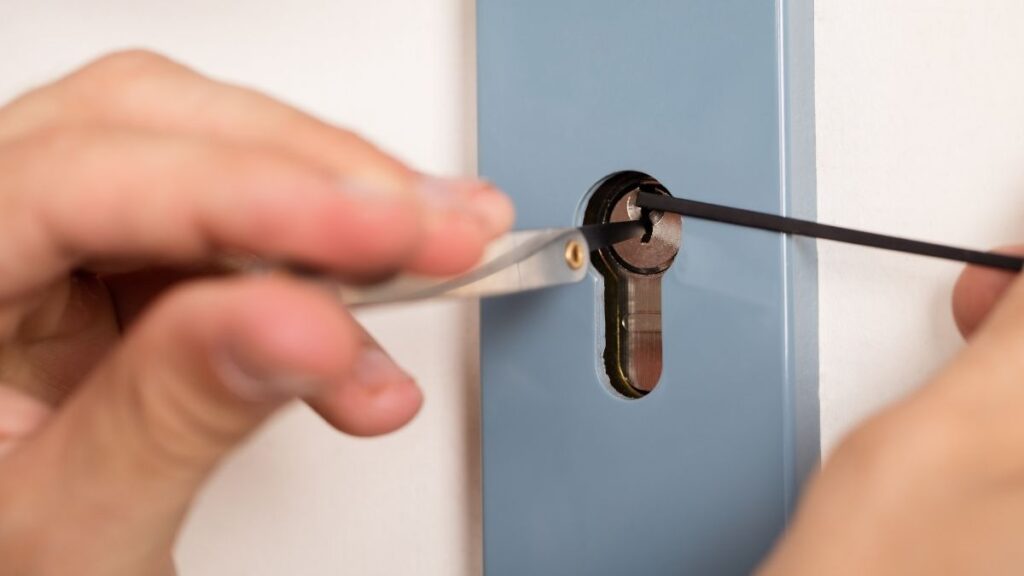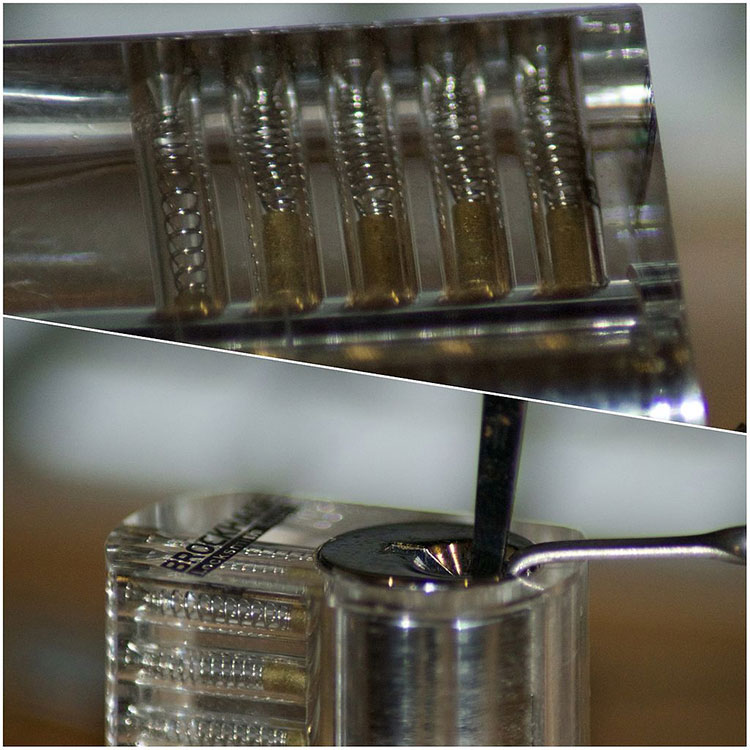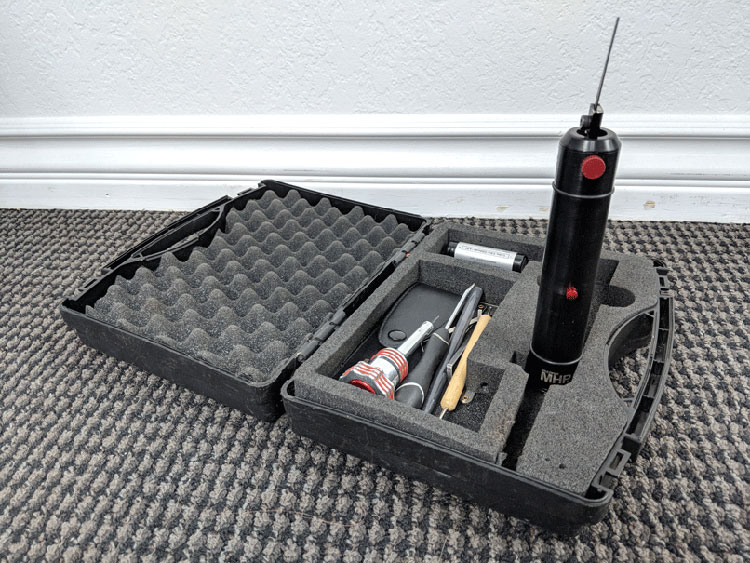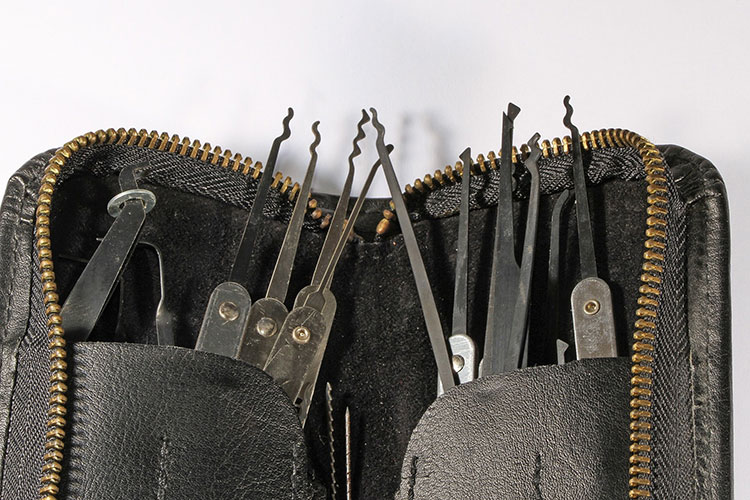
So you’ve been delving into the world of lockpicking and you you’ve now learned about a lockpick gun. Good for you!
I believe lockpicking is a valuable skillset to be proficient in and could most certainly prove of benefit to the prepper.
Imagine a post-disaster world where you finally make it to your survival retreat only to discover that you lost the key to the front door along the way. If you have lockpicking material on your person, you don’t have to worry about breaking anything open in order to get in. And though you’ve already likely experimented with lockpicks, you now have questions about a lockpick gun.
Lockpick guns are one more way that a person can use to bypass a lock. But are lockpick guns a foolproof means of gaining entry to a doorframe? Are they worth the investment? Let’s take a closer look at the situation below.
How Does a Lockpick Gun Work?
All lockpick guns do the same basic principle: they take a small metal sliver, put it under spring tension, and then suddenly release. This causes the metal sliver to rapidly shoot with an upwards motion.
Your typical lock you come across on a daily basis has a series of chambers within it which houses little pins of varying sizes. In order to unlock a lock, all of these little pins have to pass what is called the “shear line.”
If you try to turn a lock when the pins are blocking the shear line, you’re literally barred from twisting the cylinder by a piece of metal (the little pin).

Lockpicking works by pushing each little pin above the shear line so that you can then open the lock. Think of it as manually moving each pin into the correct position.
The way a lockpick gun works is by rapidly shooting all of the pins (there’s usually five) above the shear line. In that brief moment in which all of the pins are above the shear line, if you have the appropriate tension applied to the lock with a tension wrench, you’ll then be able to open the lock.
What Are the Different Types of Lockpick Guns?

There are two main flavors of lockpick guns out there: manual and electric. The only difference is that a manual lockpick gun requires you to squeeze the trigger every time that you want to “fire”. An electric lockpick gun is something akin to a full-auto machine gun. All you have to do there is hold onto a button and the lockpick gun will fire over and over again.
The benefit to this is that it virtually always takes multiple trigger pulls to get a lock open with a lockpick gun. There’s only been a handful of times I’ve successfully gotten a lock opened on the first squeeze. Most of the time it takes me 12+ squeezes until I can get the lock open, and it’s not uncommon for it to take well more than that.
This is where the electric lockpick gun shines. If it’s going to take you a lot of fiddling around with the proper amount of tension and angle of the lockpick gun to get the lock opened you can be more efficient on your end by squeezing off 100 rounds electrically compared to squeezing off 30 rounds manually within that same time frame.
Think of it kind of like using a nail gun. I can pound a nail in with a hammer, or I can just shoot it in with a nail gun. One is much more efficient (and expensive) than the other. The same applies to lockpick guns.
Are Lockpick Guns Better than Lockpicks?
I think the answer to this one really depends on who you ask. Personally, I prefer using lockpicks over a lockpick gun.
That being said, every time I go out on a lockout call, I always carry both with me. There are some locks out there which respond better to one tool over the other and I like having options available to me while I’m out in the field.

A lockpick gun is an inherently bulkier option as well that doesn’t fit into a pocket very well. I also feel as if I have more control with individual picks too.
I will point out though this isn’t the quick fix that Hollywood would lead you to believe. If you think you’re going to get into every lock out there with three quick squeezes of the trigger, you’re being misled. That is not going to happen.
Every lock is different and there is a technique involved with using a lockpick gun. A bit of luck comes into the pot as well. Let’s look at what we need to know technique-wise next though.
Techniques for Using a Lockpick Gun
Using a lockpick gun isn’t the most complicated thing in the world, but it isn’t as straightforward as one may initially think it is either. There’s most certainly a technique that’s involved with the process, and it took me a lot of practice to become (reasonably) proficient with one.
Here are the tips on technique that you need to keep in mind when using a lockpick gun:
1) You Need a Tension Tool
Just as you would if you were using lockpicks, you’ll need a tension tool or you’re going to bend your lockpick gun into a corkscrew. Though I have used a lockpick gun to open doors before without using a tension tool (e.g. dropping the tension tool in the grass and losing it), it’s going to work best with one.
2) Vary the Tension
This is probably the most important piece of advice I can give you here. If you’re not getting any results with the tension you’ve been applying, vary the pressure you’re applying to the tension tool ever so slightly back and forth.
Different locks require different tensions to open – with higher quality locks often requiring much less tension to open than a Kwikset – and sometimes you may not know where on the scale you’re at. By varying the tension throughout the lockpick gun process you stand a better chance of hitting a homerun and getting that lock open.
3) Experiment with Different Angles
If I’m not getting any results out of the way I’m currently holding the gun, I’ll cant my wrist so that the pick gun is angled more downwards or upwards. This allows the lockpick gun to hit certain chambers before other ones and may be just the ticket to getting that lock open.
4) Consider Finishing Off with the Picks
Oftentimes, if I can’t get a lockpick gun to do the job for me, I’ll gently withdraw the lockpick gun while still maintaining my pressure on the lock with the tension tool. Odds are that the lockpick gun blasted at least some of the little pins above the shear line. I can usually get the rest of the pins where I need them to be using a hook lockpick after all the pick gun use.
You can get a taste of how all this pans out in real life by checking out the video below:
What Are the Best Lockpick Guns?
Admittedly, I’ve only ever used two different brands of lockpick guns while out in the field, both of which came from H.L. Flake. In my experience though, I don’t think there’s a lot of variety out there to choose from. Lockpick guns are pretty difficult to run across. Many online retailers requiring you to show proof of being a locksmith before they’ll consider shipping it to you.
It’s not impossible, mind you, just difficult. You won’t even find them on Amazon. There are plenty of options out there which are more than happy to ship you product if you have the money.
Southord is a brand that does have a good reputation, however. I recommend shopping around at LockpickShop.com. They’re a website I’ve enjoyed using in the past and have a pretty good selection and pricing of most locksmith tools.
Final Thoughts
These are most certainly a valuable tool to keep around if you think you’re going to be doing a lot of picking, but for the average prepper I think they’re a bit of overkill. You’d be much better off just buying a quality set of lockpicks, practicing with them often, and keeping them on your person, I think, than going for a lockpick gun.
No products found.
They’ll fit in a wallet, pocket, glove box, or BOB much better, and as a result are liable to be what you have on your person when you desperately need to gain access to a locked door/padlocked gate. That’s just my two cents on the matter.
What are your thoughts on lockpick guns? Do you have a favorite? Do you prefer good ol’ fashioned picks? Let us know in the comments below!
